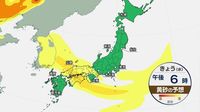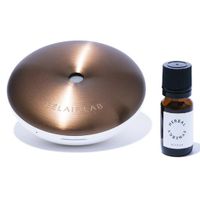This spring, as the blossoms bloom and the weather warms, millions in Japan brace for what many call the "second national disease": hay fever. This seasonal affliction, characterized by sneezing, itchy eyes, and nasal congestion, has become increasingly prevalent over the decades, prompting discussions about its origins and the factors contributing to its rise.
The first documented case of hay fever was reported by British physician John Bostock in 1819. He described a condition involving periodic afflictions of the eyes and chest, noting that symptoms would flare up around early June. Bostock's findings were groundbreaking, yet he struggled to find more cases, identifying only 28 similar instances over a nine-year span. This rarity made hay fever a mystery for many years.
It wasn't until 1873 that Charles Harrison Blackley, another British doctor, pinpointed the cause of hay fever to grass pollen. His research involved self-experimentation, leading to the conclusion that pollen from grasses was responsible for the symptoms. Around the same time in the United States, physician Morrill Wyman identified what he termed "autumn catarrh," linking it to ragweed pollen, which flourished in the urbanized landscapes of the time.
In Japan, the awareness of pollen allergies began to take shape much later. Dr. Yozo Saito is credited with discovering and naming "cedar pollen allergy" in 1963 at a hospital in Nikko City, Tochigi Prefecture. Prior to this, hay fever was relatively unheard of in Japan. However, by the 1970s, the number of patients began to rise dramatically, a trend often attributed to post-war reforestation efforts. Large-scale planting of cedar trees created what are known as "monoculture forests," which, as they matured, produced copious amounts of pollen, leading to a spike in allergy cases.
Fast forward to today, and Japan is facing a significant pollen crisis. The Japan Weather Association recently announced its fifth forecast for pollen dispersal in spring 2025, predicting that while cedar pollen will likely be past its peak by the end of March, cypress pollen is expected to peak in early April. This year, cedar pollen started dispersing in Tokyo's Chiyoda Ward on February 15, and the total amount of pollen dispersal is predicted to reach approximately 6000 particles per square centimeter, slightly above the average.
The forecast indicates that by the end of March, cumulative pollen dispersal will have reached 50%. As the season progresses, the symptoms of hay fever will intensify for many, particularly as warmer temperatures are anticipated. In fact, March has already seen unusually warm weather, with Tokyo experiencing its third summer day in March, a first in recorded history. This unexpected heat may exacerbate pollen dispersal, leading to a challenging season for allergy sufferers.
As the pollen season unfolds, various products have emerged to help mitigate the discomfort associated with hay fever. From herbal synergy aroma oils to specialized clothing designed to repel pollen, consumers have a range of options to choose from. For instance, the HERBAL SYNERGY aroma oil, priced at ¥2,530, can be used with a diffuser to alleviate discomfort during peak pollen times. Additionally, the N organic Basic soothing cleansing gel, costing ¥3,850, offers a gentle way to cleanse the skin of pollen and other irritants.
Moreover, the demand for protective gear is on the rise. The Zoff PROTECT Honeys 2WAY sunglasses retail for ¥8,800 and are designed to shield the eyes from both pollen and UV rays. Similarly, the Aoyama flower pollen protect shirt, priced at ¥4,950, features a fabric that repels pollen, making it easier for wearers to enjoy their day without the fear of triggering allergy symptoms.
As spring unfolds, it is essential for individuals to stay informed about pollen levels and take proactive measures to protect themselves. The Japan Weather Association emphasizes the importance of monitoring pollen forecasts, especially as conditions can change rapidly with shifts in weather patterns. With the cypress pollen peak approaching, allergy sufferers should be prepared for an increase in symptoms.
In addressing the broader implications of hay fever, experts suggest that the issue extends beyond just pollen exposure. The rise in hay fever cases reflects significant changes in lifestyle, urbanization, and environmental factors. Increased pollution, changes in diet, and the modern lifestyle may also contribute to the heightened sensitivity individuals experience today.
As we navigate this pollen-laden season, it is crucial to recognize the historical context of hay fever’s emergence and the ongoing challenges it presents. With the right information and tools at hand, those affected can better manage their symptoms and continue to enjoy the beauty of spring.




